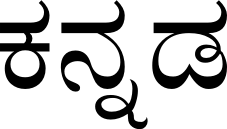Language/Kannada/Grammar/How-to-Use-Be
Hi Kannada learners! 😊
In this lesson, we will learn how to use the verb "be" in Kannada. This is an intermediate level lesson, so if you are a beginner, you may want to review some of the basics first.
The verb "be" is used to express existence, identity, and location. In Kannada, it is conjugated differently depending on the subject. Let's take a look at the conjugations for the verb "be":
| Subject | Kannada | Pronunciation | English Translation |
|---|---|---|---|
| I | ನಾನು ಇದೆ | nānu ide | I am here |
| You (singular) | ನೀವು ಇದ್ದೀರಿ | nīvu iḍḍīri | You are here |
| He/She/It | ಅವನು ಇದೆ | avanu ide | He/She/It is here |
| We | ನಾಮೂಂದು ಇದ್ದೇವೆ | nāmūṃdu iḍḍevē | We are here |
| You (plural) | ನೀವು ಇದ್ದೀರಿ | nīvu iḍḍīri | You are here |
| They | ಅವರು ಇದ್ದೇವೆ | avaru iḍḍevē | They are here |
Let's look at an example dialogue to see how the verb "be" is used in context:
- Person 1: ನಾನು ಇದೆ (nānu ide) - I am here
- Person 2: ನೀವು ಇದ್ದೀರಿ (nīvu iḍḍīri) - You are here
- Person 1: ಅವನು ಇದೆ (avanu ide) - He/She/It is here
- Person 2: ನಾಮೂಂದು ಇದ್ದೇವೆ (nāmūṃdu iḍḍevē) - We are here
- Person 1: ನೀವು ಇದ್ದೀರಿ (nīvu iḍḍīri) - You are here
- Person 2: ಅವರು ಇದ್ದೇವೆ (avaru iḍḍevē) - They are here
As you can see, the verb "be" is used to express existence, identity, and location. It is important to remember that the conjugation of the verb "be" changes depending on the subject.
To improve your Kannada Grammar, you can also use the Polyglot Club website. Find native speakers and ask them any questions!
That's it for this lesson! We hope you have learned something new about Kannada grammar.
➡ If you have any questions, please ask them in the comments section below.
➡ Feel free to edit this wiki page if you think it can be improved. 😎
Related Lessons

